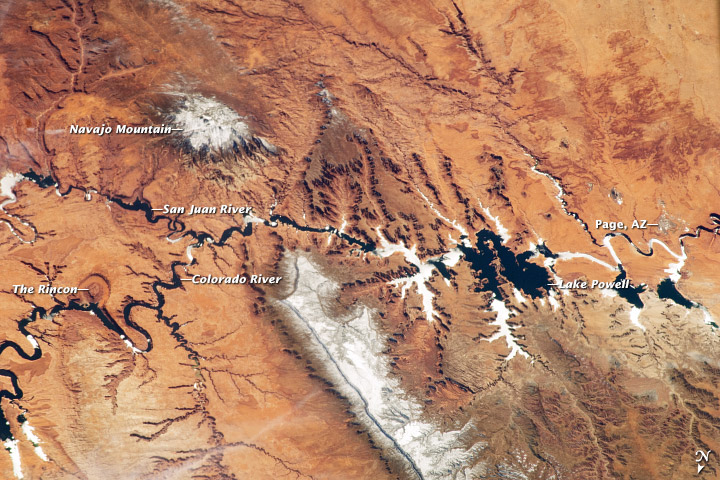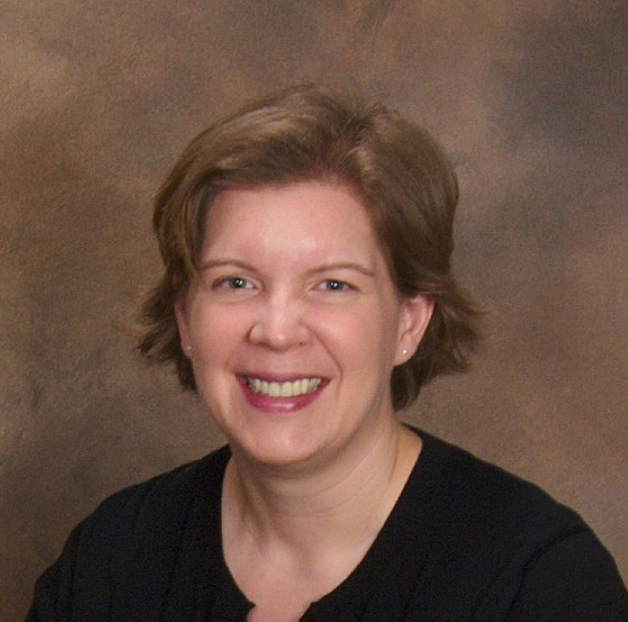Grand Canyon View From Space Reveals Jaw-Dropping Scenery

A jagged scar etched in copper-colored rocks, the Colorado River's channel curls through one of the world's most scenic landscapes.
Draining seven states and two countries, the river is one of the Southwest's most important water sources. One of its major reservoirs, Lake Powell, can be seen from space in a photo snapped March 12 by an astronaut aboard the International Space Station.
Sunglint (reflected sunlight) gives the water a mirrorlike sheen, reports NASA's Earth Observatory. In the photo, the river runs left to right because the astronaut was looking at the river canyon from the south. North is to the bottom of the image.
An abandoned river meander, called The Rincon, stands out like a pimple at the left edge of the photo. The long, knife-sharp edge of the snow-dusted Straight Cliffs, a plateau in the Grand Staircase-Escalante National Monument, divides the middle.
Though the Colorado River now cuts through rocks nearly 2 billion years old in the Grand Canyon, the river is only 50 million years old. Its waters headed to the southwest or the north of the current Grand Canyon — geologists disagree on the details — until about 5 million years ago.
This story was provided by OurAmazingPlanet, sister site to SPACE.com. Email Becky Oskin or follow her @beckyoskin. Follow us @OAPlanet, Facebook or Google +. Original article on LiveScience's OurAmazingPlanet.
Get the Space.com Newsletter
Breaking space news, the latest updates on rocket launches, skywatching events and more!
Join our Space Forums to keep talking space on the latest missions, night sky and more! And if you have a news tip, correction or comment, let us know at: community@space.com.

Becky was a science reporter at The Pasadena Star-News. She has freelanced for New Scientist and the American Institute of Physics and interned at Discovery News. She earned a master's degree in geology from Caltech, a bachelor's degree from Washington State University, and a graduate certificate in science writing from the University of California, Santa Cruz. To find out what her latest project is, you can follow Becky on Twitter.










